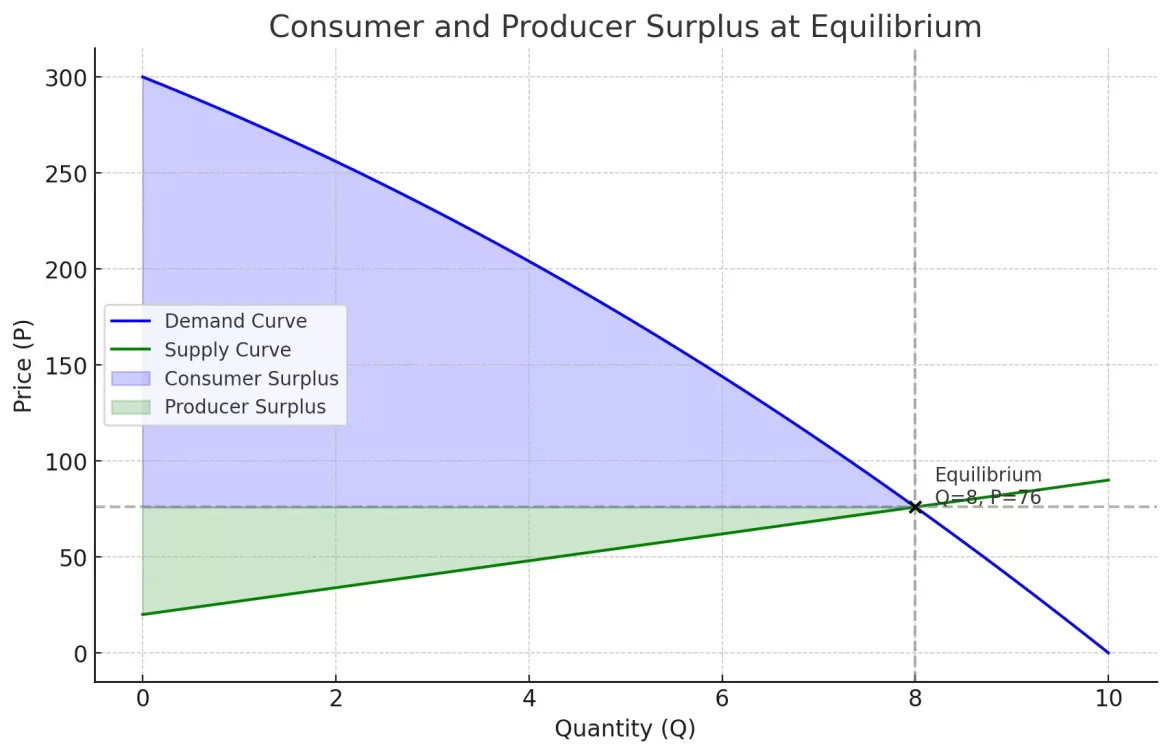Consumer and Producer Surplus at Equilibrium
The following demand and supply functions are given:
- Demand function (price as a function of quantity):
- Supply function:
Questions
(a) Determine the domain of the demand function given that it is decreasing. Then find the equilibrium price and quantity.
(b) Calculate the consumer surplus at equilibrium.
(c) Calculate the producer surplus at equilibrium.
Solutions
(a) Domain and Equilibrium
Step 1: Domain of the Demand Function
Given:
This is a quadratic function opening downward (because the coefficient of is negative). The function is decreasing as long as we stay to the left of the vertex.
The vertex of a quadratic occurs at:
But this is not valid, because negative quantities make no economic sense here. Since we want the decreasing part, we only consider values before the vertex, so for:
Step 2: Find Equilibrium
Set :
Move all terms to one side:
Multiply through by -1:
Solve using the quadratic formula:
So, equilibrium quantity is
Substitute into either function to find price:
Or:
✅ Equilibrium is at ,
(b) Consumer Surplus
Consumer surplus is the area between the demand curve and the price, up to the equilibrium quantity.
Use the integral of the demand function from to , minus the rectangle :
Integrate:
Substitute :
Rectangle area (expenditure):
So:
✅ Consumer Surplus ≈ 981.33
(c) Producer Surplus
Producer surplus is the area between the price and the supply curve, up to the equilibrium quantity:
Calculate the integral:
Rectangle area:
So:
✅ Producer Surplus = 224
Final Answers
- Equilibrium: ,
- Consumer Surplus: ≈ 981.33
- Producer Surplus: 224

